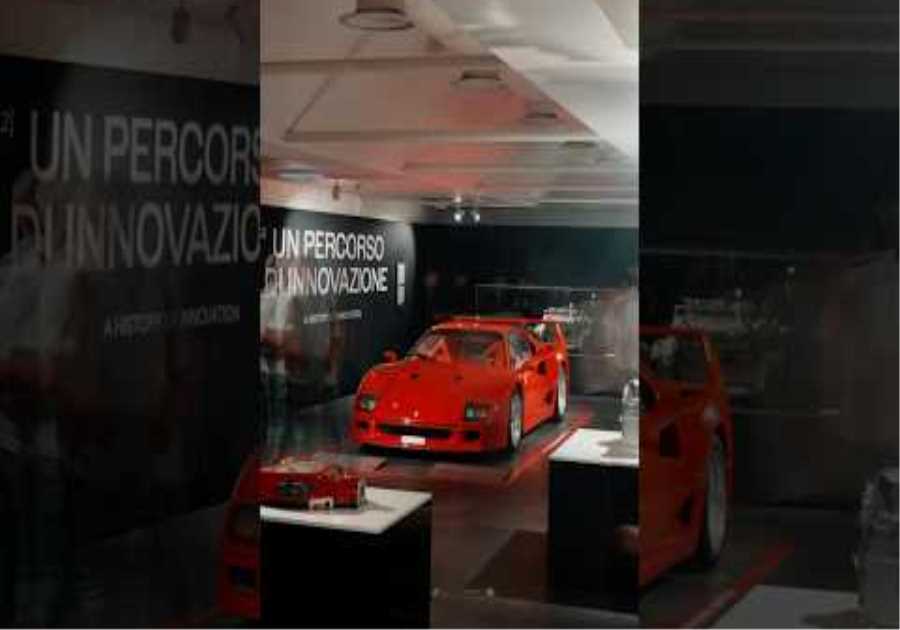
After months of speculation, BMW confirmed they will return to the FIA World Endurance Championship in 2024. The German marquee hadn’t participated since the late 90s when they competed with their V12 LMR, which won the 1999 24 Hours of Le Mans and 24 Hours of Sebring. This time they will deploy their new Hybrid M V8 in the Hypercars class. But first, it will run at the 2023 IMSA series and introduce the future of electrified BMW M cars. But this isn’t the first car or prototype to bring cutting-edge innovation to the pinnacle of endurance racing.
The 24 Hours of Le Mans is one of the most anticipated events in the racing calendar every year. The track is amazing, and top drivers bring their best with incredible racing on their technical masterpieces. There is everything from naturally aspirated V8s, turbocharged V6 diesels, sophisticated hybrid systems, and more. Read on to find out the most innovative cars to ever feature at the 24 Hours of Le Mans across a century of racing.
10 Jaguar D Type

Jaguar took the 50’s racing scene by storm by securing five Le Mans wins between 1951 and 1957. It started with the Jaguar C-Type, which won the first title for the British marquee. But the D-Type was more dominant, winning three events in a row, culminating in a one-two-three-four finish in the 1957 race. It is the most successful Jaguar racer, thanks to its innovation.

The D-type had aeronautic influences and pioneered some innovations in motorsport. Notable was the use of a monocoque structure with lightweight aluminum subframes, a technology still employed in today’s supercars.
9 Bentley Speed Six
-1.jpg)
The founder of Bentley Motors, Walter Owen Bentley, was a car enthusiast like most founders of prewar manufacturers. He founded the company in 1920, and in 1924 he won the Le Mans, followed by four consecutive wins from 1927, thanks to the fast, reliable, and innovative cars like the Speed Six masterpiece introduced in 1928.
The Speed Six was a high-performing naturally aspirated car with a monster 6.5-liter straight-six engine. Other innovations included a single-port block, two SU carburetors, a dry-plate clutch design with a clutch brake for quicker gear changes, and power-assisted four-wheel brakes with finned drums.
8th Mazda 787B

In 1991, the Mazda 787B won the Le Mans, becoming the first Japanese-built machine to achieve this feat. Some wrongly claim FIA banned the car for being too fast, but a change in regulations made the innovative rotary engine ineligible. Its win was actually thanks to its reliability since there were faster cars on the grid like the Peugeot prototypes, which took 1-2 in qualifying. The rest of the field suffered reliability issues, thus bringing Mazda the win.

Innovations included a lightweight body weighing just 1830 pounds and the four-rotor naturally aspirate engine featuring peripheral port intake and exhaust, electronically controlled injection, three-plug ignition, and ceramic apex.
7 BMW M1

The nineties were BMW’s best years at the 24 Hours of Le Mans, with two overall wins and a couple of respectable placings in the endurance classic. But the M1’s participation between 1979 and 1986 was the most intense for the Bavarian marque. The car remains BMW’s only mid-engined production machine with eight Le Man races under its belt where 21 cars qualified, albeit with unsatisfactory finish outcomes. Stiff competition from icons like the Porsche 935 and reliability issues limited the success.

Still, the car managed two class wins thanks to its advanced technical innovations never seen on any BMW cars. They included a dry crankcase lubrication system, a Magnetti Marelli ignition system, a five-speed ZF gearbox, and a servo-assisted brake circuit.
6 Audi R18 E-tron

The modern electric car gained popularity at the run of the century, and it hasn’t slowed down. The future of motorsport seems electric, with the first FIA-sanctioned Formula E rave slated for September 13, 2014. But Audi has a place in the world of firsts for being the first manufacturer to win le Mans with a hybrid car.
They accomplished the feat with the Audi R18 E-Tron Quattro. It went ahead to win the next two events to showcase the dominance of the new technology and paved the way for the new age of hybrid champions from Porsche and Toyota.
5 Porsche 917

The Porsche 917 gave Porsche their first ever overall Le Mans win. It ran a 5-liter flat 12 engine making it an absolute monster. But underneath, advanced innovations set the German marquee to be the most successful constructor at the legendary French circuit.

The top innovation was a lightweight space frame chassis made from small pressurized tubes weighing 92.5 pounds and a curb weight of just 1764 pounds propelled by the 621 ponies from its engine. Porsche transformed the 1970 version and turned it into a Le Man’s champion with an altered frame, new front, and rear body, and modified exhausts.
4 Ford GT40

Most people know the GT40’s fierce battles with the dominant Ferrari and the Hollywood flick featuring Matt Damon and Christian Bale. It is an influential American icon born out of hard work, ingenuity, passion, and innovation. It was among the first cars to tap into the benefits of a mid-engine configuration and featured a carbon fiber body with feline-like aerodynamics and assured handling.

The new Ford GT is following its predecessor’s spirit and has become a Le Mans icon after returning Ford to the Circuit de La Sarthe after a long hiatus.
3 Porsche 936

New FIA rules in 1972 saw the exit of performance prototype monsters like the Porsche 917 and Ferrari 512. But this was temporary, seeing the governing body resumed prototype competition in 1976. But they capped engine displacement at three liters and allowed turbos up to 2.1 liters . Porsche built a prototype on the 917’s space frame with the 935’s proven 2.1-liter turbo engine and a fiberglass Spyder body.

The result was the 936, which dominated the inaugural 1976 World Sportscar Championship, including an all-important overall Le Mans victory.
2 Ferrari 250LM

First introduced by Ferrari and Pininfarina in 1963, the 250 LM prototype was an innovative marvel of design and engineering excellence. It came with adjustments that balanced weight distribution with two 65-liter fuel tanks mounted in the front and rear of the tiny package weighing 1873 pounds.
Ferrari used higher gauge steel to add rigidity to the complex and robust chassis. In 1965, the 250LM fulfilled its destiny by winning the Le Mans, a race it derived from its name.
1 McLaren F1 GTR

Gordon Murray, the designer of the McLaren F1, described the car as the purest driver’s car, compact and ultra-lightweight, embodying the most advanced engineering details and peerless quality. In 1995, the car was ahead of its time. It came in a mid-engined, three-seater configuration with the driver’s seat mounted at the absolute center of the car’s mass.

Murray also built it to produce the lowest polar moment of inertia possible hence it could quickly respond to direction changes at high speed. A race-ready F1 GTR variant featured at the 1995 24 Hours of Le Mans, with car #59 crossing the finish line in first place.






